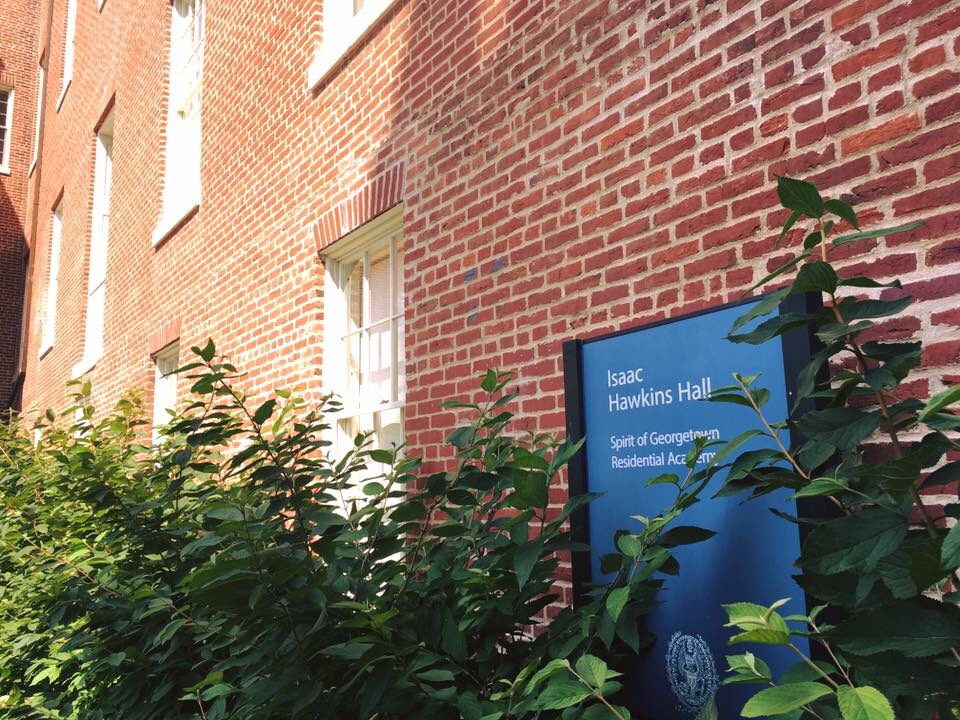
In April 2020, near the beginning of the Covid-19 pandemic in the United States, Louisiana emerged as an epicenter of the disease. Mardi Gras had just occurred and caseloads spiked in New Orleans and Baton Rouge. But no place was more devastated than a veterans retirement home in the town of Reserve. News reports detailed individual stories of the people who had died. But none mentioned George Washington Taylor, a 96-year-old World War II veteran who died on April 22.
Amid the chaos of the moment, few in the general public paused to note George Taylor’s passing. But his death marked a milestone for those researching the history of universities and slavery, as well as for activists pursing the ongoing struggle for reparative justice. Taylor was the oldest surviving male descendant of Isaac Hawkins, the first person named on a manifest cataloguing the sale of 272 enslaved people by the Jesuits who operated Georgetown University in 1838.

Isaac Hawkins Hall at Georgetown University was named for one of 272 enslaved people sold by the university in 1838.
The story of the 272 enslaved people sold by Georgetown University — known as the GU272 — became international news a few years ago, when students at the university began organizing to create a fund to benefit the descendants of the people who had been sold. At the time it was one of the most concrete steps toward local reparations for slavery that had been enacted anywhere in the country. Despite the attention given to this story, there is more to discuss.
Welcome to Overdue Conversations, a podcast that explores the connections between history, archives, and politics. The podcast is hosted by Lina Moe and Thai Jones, curators at Columbia University’s Rare Book & Manuscript Library. This season we will focus on how research into archival sources has played a pivotal role in the intersecting movements for reparative justice and the scholarly efforts to examine the links between slavery and universities.
Sometimes archives wait decades for the moment in which they get reanimated and reactivated. The history of the Georgetown Slavery Archive is one such case. The collections at Georgetown were not secret– since at least the late 19th century, historians had reflected on the entangled history of the university and slavery. In the 1990s, some documents were put online and used in American studies classes. But around 2015, something new happened. Archival documents were quoted in the student newspaper, the Georgetown Hoya, the archive became the kind of thing debated in and out of class, in the cafeteria and at parties. The university chartered a Slavery, Memory, and Reconciliation commission, and students across campus debated the possibility of taking direct, reparative action themselves. The descendent community, GU 272, emerged as a powerful interlocutor for the university: demanding that it confront its past.
What follows is a series of conversations that pull at one thread in this remarkable story: what was the role of the archives in the movement at Georgetown to confront the history of enslavement at the university? Why now– why were these documents rediscovered and put to explosive use now? It’s hard to think of a more high-profile collection of archival boxes.